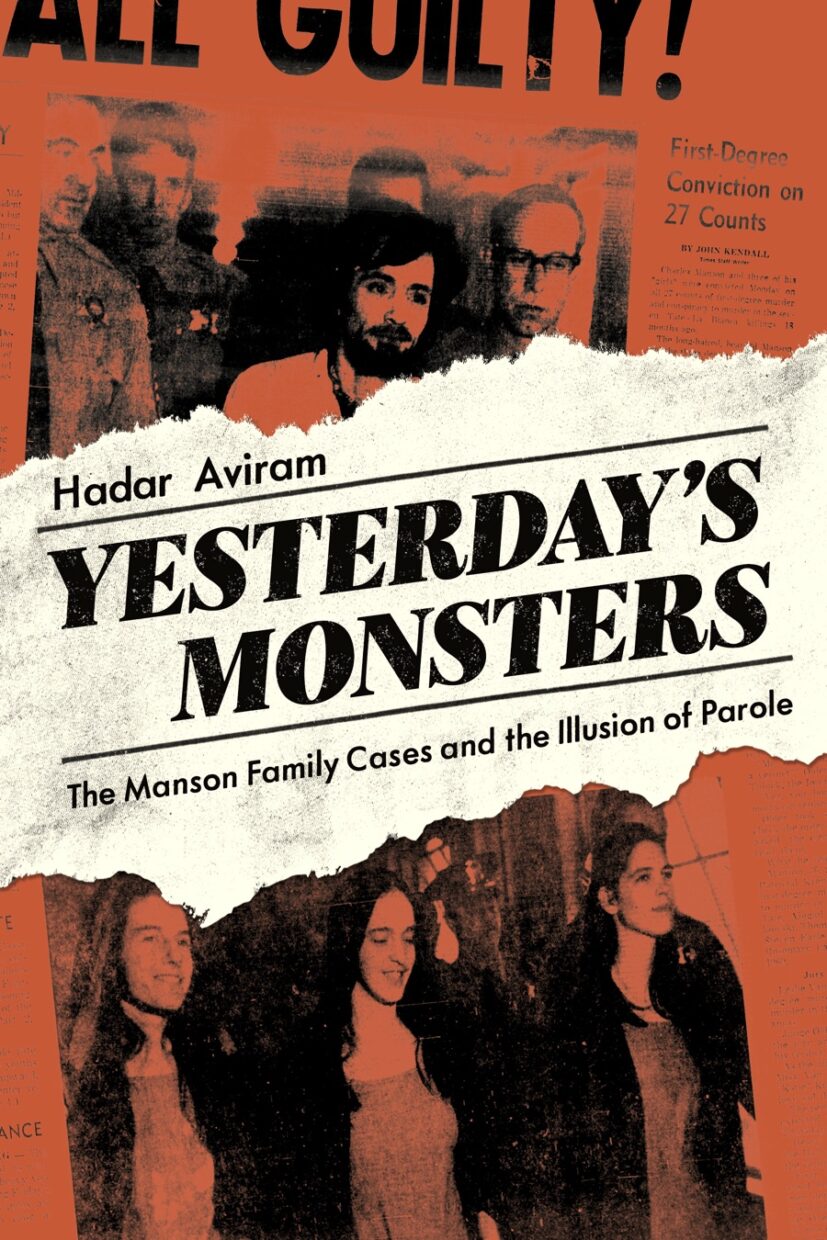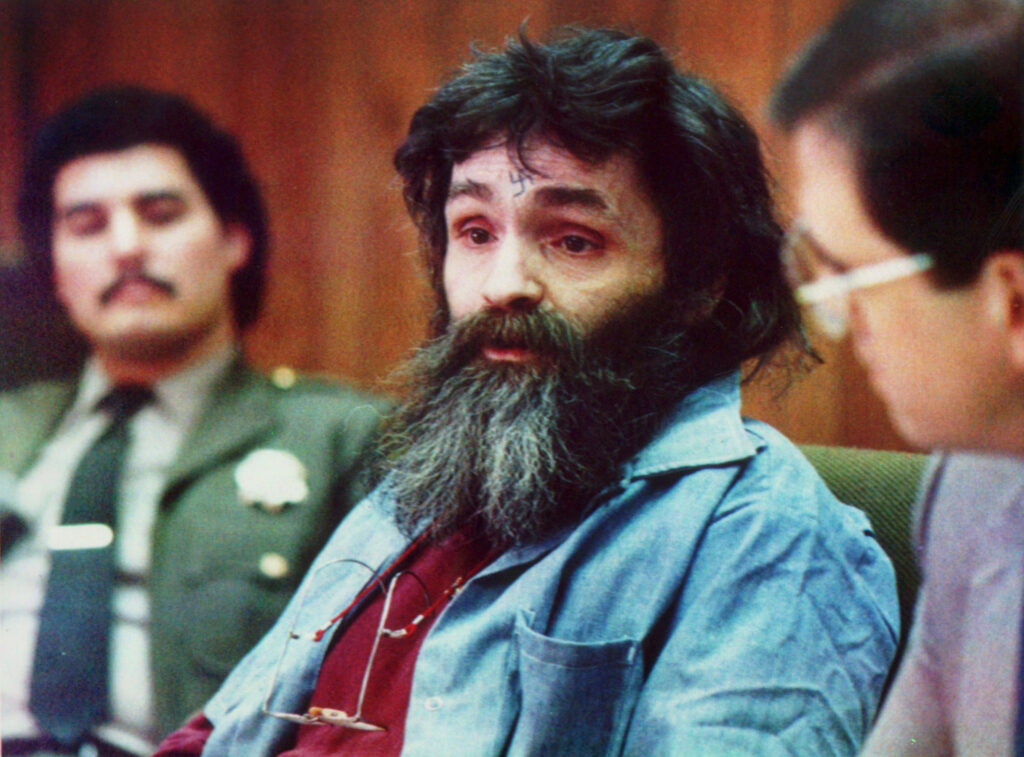
I’m very happy to share a great review of Yesterday’s Monsters written by Bob Egelko of the San Francisco Chronicle.
Review: ‘Yesterday’s Monsters’ shows parole system’s flaws in Manson cases
Bob Egelko September 30, 2020 Updated: September 30, 2020, 7:28 am
Susan Atkins, convicted of eight murders as a member of Charles Manson’s “family,” was dying of cancer when she made her 18th appearance before the California parole board in September 2009, after nearly 40 years in prison. Bedridden for 18 months and barely able to speak or move, she remained largely silent while her husband and attorney, James Whitehouse, asked the board to release her to a hospice, which he said he would pay for.
In response, relatives of Manson’s victims recalled the horrors of the 1969 killings. A Los Angeles prosecutor, Patrick Sequeira, called the family a “criminal terrorist organization” and said Atkins “has tried to minimize her involvement in the crime.” The board swiftly decided Atkins “poses an unreasonable risk if released” and denied parole for at least three more years. Atkins, 61, died of brain cancer 22 days later.
The incident is the most graphic but far from the only illustration of a malfunctioning system in “Yesterday’s Monsters: The Manson Family Cases and the Illusion of Parole” by Hadar Aviram, a professor at UC Hastings College of the Law in San Francisco who specializes in criminal law and civil rights.
The state Board of Parole Hearings shows “a clear preference for looking back and discussing the past (rather) than for the future, sometimes astonishingly ignoring terminal illness and old age when discussing future risk,” Aviram writes. And that, she notes, is the opposite of its assigned task of determining whether a prisoner who has served many years for past wrongdoing can now be safely released.
The book is a study, not an exposé — there are nearly 800 footnotes — but its language is everyday and accessible. Discussing inmates’ need to display “insight” into their crimes to be found suitable for parole, for example, Aviram writes, “the Board continuously moves the goal posts.” It’s aimed at two sets of readers, those who care about the workings of the criminal justice system and those with enduring memories of the Manson nightmare (this reviewer fits both categories).

It may not be fair to judge any criminal justice process by its response to extremes, and the Manson cases are about as extreme as they come. For reasons that remain unclear — some say Manson wanted to start a race war, others simply describe a cult obsessed with drugs, sex and violence — he ordered seven of his followers, including Atkins and two other young women, to kill nine people in three gruesome attacks in the Los Angeles area in July and August 1969. After the fatal stabbing of actress Sharon Tate, Atkins scrawled “PIG” in Tate’s blood on the front door of the home.
Manson, Atkins and three others were sentenced to death in 1971. But the state Supreme Court overturned California’s death penalty law in 1972, and all death sentences were reduced to life in prison with the possibility of parole; only under the subsequent law, passed by legislators in 1977 and expanded by the voters in 1978, were capital cases made punishable solely by death or life without parole.
Meanwhile, lawmakers and Gov. Jerry Brown, serving the first of his four terms in office, were remaking California’s sentencing and parole structure.

Previously, nearly all crimes were punishable by a range of terms — 1 to 5 years, for example, or 5 to 20 — and a parole board that included psychologists and other professionals decided when a prisoner was fit for release. The system came under attack from both the left, as racially prejudiced, and the right, as unduly lenient, and was replaced in 1977 by “determinate” sentences for most crimes — two, four or six years, for example, with the sentencing judge making the choice.
Only “lifers,” those convicted of murder or a few other crimes, such as kidnapping, would now appear before the parole board, after a designated period, to seek their release. And board members were appointed by the governor, who generally chose law enforcement professionals skeptical of claims of rehabilitation.
The parole board’s occasional decisions to approve release were made subject to the governor’s veto by a 1988 initiative. A 2008 initiative called Marsy’s Law requires inmates who are denied parole to wait 15 years for their next hearing — five times the previous interval — unless the board finds “clear and convincing evidence” to justify an earlier hearing.
“Yesterday’s Monsters” focuses on a Board of Parole Hearings that is supposed to look forward, not backward. The state Supreme Court underscored that mission in a 2008 ruling that prohibited both the board and the governor from denying parole based solely on the gruesome nature of the crime — though, in a frequently cited exception, the court said the board could consider an inmate’s lack of “insight” into the offense.
Participants in the Manson family hearings, in transcripts quoted in the book, have focused largely on the past — understandably, in light of the events that gave rise to the hearings.

At one hearing for Patricia Krenwinkel, Aviram says, prosecutor Sequeira declared, “I think if she had true remorse and she truly understood her crimes and the horrific nature of it, she wouldn’t be here at a parole hearing. She would just accept a punishment.”
Relatives of the victims were equally unforgiving.
“There are eight people that lie in their graves who remain unchanged, unrehabilitated, unparoled,” Anthony Demaria, a nephew of murder victim Jay Sebring, said at Krenwinkel’s 2011 hearing. “I beg the board to consider parole for Patricia Krenwinkel only when her victims are paroled from their graves.”
At another hearing, board members asked Krenwinkel why she wasn’t attending drug-treatment programs and shrugged off her explanation that her high-security custody barred her from the nighttime classes.
At a 1981 hearing, the board was unimpressed by ex-Mansonite Bruce Davis’ leadership position with a Christian counseling group in prison. One board member, Aviram notes, said Davis had merely switched his allegiance from “one god-like figure to another.”
When Manson follower Leslie Van Houten appeared before the board in 2013, Aviram says, she had a strong record of participation in prison rehabilitation programs, with a few minor violations, the last one in 1981. The board denied parole on the grounds that she lacked insight into her life before imprisonment: “You need to demonstrate what made you that person to engage in those acts so long ago.”
Three years later, with Van Houten’s record substantially the same, the board recommended her release but was overridden by Brown’s veto, events replicated under Gov. Gavin Newsom in 2019. Steve “Clem” Grogan, a relatively minor participant in the crimes, was paroled in 1985. Manson, denied parole at 12 hearings, died in prison in 2017 at age 83. His other co-defendants remain behind bars.

In one sense, the timing of the 1969 murders spared Manson and his cohorts from more severe punishment. Had they committed their crimes a decade later, some of the Family almost certainly would have been executed, and others would have had no opportunity for parole. And it seems safe to say that few Californians who remember the killings will shed tears at the prospect that Manson’s followers who are still in prison will probably die there.
But that doesn’t contradict the message that Aviram convincingly presents: If the parole system had worked as it was supposed to, based on the law and the policies underlying it, most of the participants in the murders, other than Manson himself, eventually would have been released.
The Board of Parole Hearings, the author concludes, “should not be the arbiter of moral goodness.”
I’d like to have seen a bit more context, comparing these parole decisions to others here and elsewhere, and perhaps some background on the parole board members, sometimes identified only by last names in the book. But as California rethinks the roles of imprisonment and parole in this COVID-19, post-Three Strikes era, “Yesterday’s Monsters” has some lessons for today.
“Yesterday’s Monsters: The Manson Family Cases and the Illusion of Parole”
By Hadar Aviram
(University of California Press; 294 pages; 29.95)
- Bob Egelko Bob Egelko is a San Francisco Chronicle staff writer. Email: begelko@sfchronicle.com Twitter: @BobEgelko
Your weekly guide to Bay Area arts & entertainment.
More In Books
- Review: ‘Big Dirty Money’ shows how white-collar crime erodes our democracy
- Review: In ‘Loudmouth,’ Creem editor recalls rock music’s drug-fueled heyday
- ‘The New Chardonnay’: How cannabis went from hippie to haute
- Mom was a dealer: Q&A with Alia Volz, author of ‘Homebaked’
- For Jorma Taccone, the path to children’s book ‘Little Fox’ runs through family
More In Books
- BOOKSReaders offer superb book recommendationsBy Barbara Lane
- BOOKSReview: ‘Conditional Citizens’ a reckoning on xenophobia against U.S. immigrants of colorBy Lauren Francis-Sharma
- BOOKSBay Area native Yaa Gyasi’s latest novel inspired by a trip to Stanford labBy Brandon Yu
Related Events
- OCT01THURSDAY, 5:00PMThe California Book Club Launch with C Pam ZhangBooksOnline eventFree
- OCT01THURSDAY, 5:30PMRise Up with Reverend Al SharptonBooksOnline eventFree
- OCT05MONDAY, 4:00PMBarbara Kingsolver Book LaunchBooksOnline event$40
hadaraviram is currently signed inConversation
Your voice matters. Conversations are moderated for civility. Read our guidelines here.hadaraviram
Powered byOpenWeb’s TermsPrivacyFeedback
FOLLOW US
WEBSITES
SFChronicleSFGATEDatebookThe PressGreenState
SERVICES
OffersStoree-editionAppsArchivesSubscriber Services
ABOUT
CompanyCareersAdvertisingCustomer ServiceContact NewsrooomFAQsPrivacy Notice / Notice At CollectionYour California Privacy RightsInterest-Based AdsTerms of Use
CCPA
Do Not Sell My Personal Information
©Copyright 2020 Hearst Communications, Inc.




No comment yet, add your voice below!